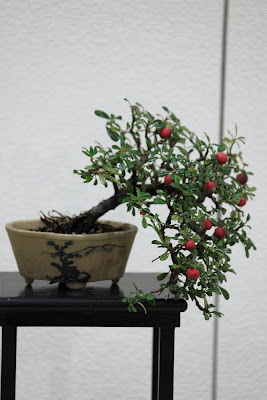Around the harvest, paddy fields turn deeper gold and rice plants proudly bow their heads.
Transparent autumn wind gently blows and touch their heads.
Cluster amaryllis are blooming and swinging with rice plants side by side.
This is my image of nostalgic autumn.
Two weeks ago, I went to Aska in Nara, the ancient capital
which is famous for terraced paddy fields and ancient burial mounds.
The figures in the above photo are not the farmers or visitors, but the scarecrows
made by the farmers to please the eye of the visitors.
This rural area is a mecca for photographers.
Here, even Buddha serves as a scarecrow to protect the paddy fields.
.
I appreciate and am thankful for the farmers' hard work. I can imagine how heavy labour is needed for them to maintain these beautiful terraced paddy fields. I guess it is impossible to use machines. The terraced paddy fields may be doomed to disappear, but I do hope this intact scenery will be passed down to the future generation forever.
More rice is ripe, more it bows deeply. It teaches us the importance to be humble.
The view of Asuka from a small hill in early dusk.
Rice is more than staple food in Japan. It has been deeply connected to our daily life and embedded in Japanese culture. And rice cultivation is also closely associated with Shinto or indigenous religion of Japan. Rice is food to the soul of the Japanese.
During the new year's holidays, we eat rice cakes and display a set of two rice cake, one large and one small, at the alcove to celebrate the new year and pray for happiness and health.
Sake or rice wine is offered to Shinto deities every day.
Sake barrels displayed in Kasuga Grand Shrine are donated from Sake brewing companies.

A sacred rope made of twisted rice straws marks the location as a sacred site
and separates the ordinary world from the divine world.
Around the time when cherry flowers to start to bloom in spring, farmers start to seed rice.
Before the season of seeding rice, Shinto ritual "Rice Planting Ceremony" is held to pray for abundant harvest all over Japan. The ritual in photos is held in Kasuga Grand Shrine in March every year. They are eight shrine maidens.
In June, a rainy season, farmers transplant young rice in a paddy field.
Now is October. Harvest is over and bundles of rice straws are dried.
Cluster amaryllis





















































